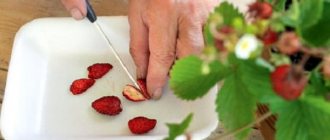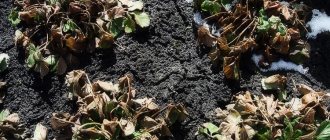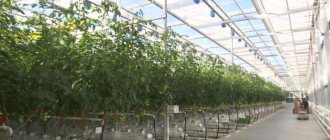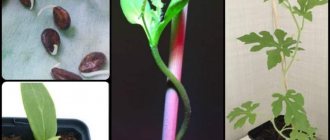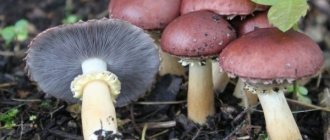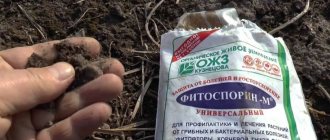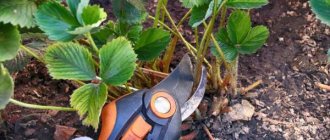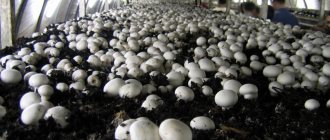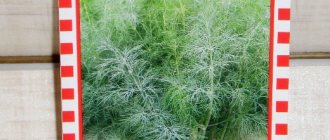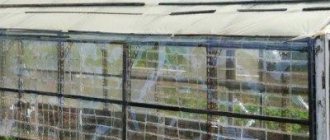Home / Garden / Berries
Back
Published: 07/05/2020
0
Rate this post
Garden strawberries, a favorite berry crop, are grown by private summer residents on a modest 6 acres and by large agricultural firms, giving hectares of land for plantations. Modern methods of cultivating Victoria, and the leaders here are Dutch agricultural technicians, make it possible to harvest several harvests all year round.
Interest in the berry is so high that new ideas are constantly appearing on how to get more yield and extend the fruiting period. Growing strawberries in bags is a proven method.
Large businesses and ordinary gardeners manage to repeatedly increase the number of planted bushes not by expanding the area, but with the help of simple technologies.
- 1 What attracts you in the new technique? 1.1 Business chooses bags
- 1.2 Why does a summer resident need this?
- 2.1 Bag master
Features of the method
To set up an original garden, you need a separate room, soil substrate and a variety of strawberries that are suitable for growing all year round.
What does the gardener get as a result:
- fresh strawberries at any time of the year;
- compact garden without weeds and pests;
- additional income.
Difficulties in growing:
- limited selection of varieties;
- materials costs;
- labor-intensive care.
To grow strawberries for sale, you need a large room and equipment to maintain a favorable microclimate.
Business profitability
Many farmers are concerned about the question of whether it is really profitable to farm strawberries on the fields and how much more profitable this business is in contrast to traditional technologies. Questions also often arise about the propagation of strawberries, because there is nowhere for them to throw their whiskers, and it is inconvenient to do this in such conditions. Let's look at the advantages and disadvantages that may arise, and calculate the approximate costs.
First, let's calculate the cost of installing 1 outlet. Traditional technology (Dutch) involves 1 pot per 1 bush, that is, a minimum of 50 rubles. You can place 5 pieces (or more) in your pot at once, and its cost is 5 rubles (used). That is, the cost for 1 piece is no more than 1 ruble. The start-up capital required to implement a business plan is 50 times less than for Dutch technology. Simple mathematical calculations show that space is saved by more than 4 times if you use hanging bags. Taking into account the cost of seedlings and other expenses, full payback occurs after the first harvest (even if the bush produces 350 grams of berries), while the Dutch technology will bring profit only after 3 strawberry harvests, moreover, this is subject to implementation in the spring and no expenses to hire a work crew. The rest of the calculations are identical.
For propagation of seedlings, open bags are used. To do this, we tie it with a rope like a ham and remove the top. Now we have enough space to root new rosettes. After 2 years, the bags become unusable; they can be thrown away immediately with the old bushes, since after 3 years they no longer produce a large number of fruits.
Selection of varieties
Planting material is ordered from nurseries and propagated vegetatively. But a regular variety that grows in the ground at the dacha is also suitable. You need to choose strong first tendrils of the mother bush with developed roots.
For commercial cultivation, varieties with the following qualities should be selected:
- ease of care;
- long fruiting;
- high yield.
The following varieties meet the selection criteria:
- Marshall - produces sweet berries, is drought tolerant, and grows quickly.
- Albion, Honey - are distinguished by cold resistance and high disease resistance.
- Geneva is a prolific variety; one bush produces up to 3 kilograms of berries.
- Gigantella is a large-fruited species that bears fruit well with abundant watering.
Small bushes that will not shade each other are suitable for planting in confined spaces. Varieties with different ripening periods will ensure continuous strawberry production.
To harvest in winter and summer, you need to plant self-pollinating varieties. Otherwise, you will have to pollinate the flowers manually.
Why doesn't it bear fruit?
- Old bushes. Good fruiting in bushes lasts for the most part no more than 3 years. No agrotechnical measures will help correct the situation, except for replacing planting material. To rejuvenate the plantation, they use tendrils or seeds from which seedlings are grown.
- Weed varieties. Sometimes when buying seedlings, you come across weed bushes that occurred during the process of free pollination on cultivated plantations. They are distinguished by powerful growth of leaves and a large number of peduncles, but they do not produce ovaries. If you find such plants in your home, they should be immediately pulled out and destroyed. Otherwise, the spreading mustache will instantly fill the beds.
- Spring frosts. More often, early varieties of strawberries suffer from returning spring frosts. During the period of abundant flowering, frosts can cause irreparable damage to yields. The most effective method of protection is tunnel covering of plantings with film or acrylic. Drip irrigation also helps protect flowers from freezing.
Preparatory work
First you need to decide on the purpose of cultivation. If the strawberries are used for personal needs, 2-4 bags that will fit in the apartment are enough.
Places to place a strawberry plantation:
- greenhouse;
- garden;
- attic.
In the greenhouse, compact beds are arranged and hung on hooks and trellises. It is necessary to maintain a distance between them so that the light falls evenly. Bags placed on the ground require shelter.
Non-residential premises are suitable for growing strawberries: a garage, a barn. The main requirements for the place are air circulation, correct temperature and lighting. A large room should be equipped with a heating and ventilation system. Outside, the bags are laid out in sunny areas. For the winter they need to be put away in the cellar.
See also
Description and characteristics of Vima Rina strawberries, planting and careRead
Selection of bags
The material must be dense. Reinforced or greenhouse film is suitable. You can simply sew the bags yourself:
- cut two pieces 200x30 centimeters;
- solder or sew along the edges.
Seams and material should not allow soil to pass through. Ready-made bags of flour and mixed feed are suitable for planting strawberries.
Preparation of soil and planting material
Slightly acidic or neutral soil is preferable for strawberries. The substrate is prepared from peat and perlite, which are mixed in equal proportions. The second version of the soil mixture consists of turf, sand, sawdust and humus. Self-collected soil needs to be calcined. High temperatures will kill insects.
Buying ready-made soil will save effort and preparation time. You should choose soil that retains moisture and air well.
Before filling the soil substrate, the bottom of the bag must be lined with drainage made of gravel, crushed bricks, and pebbles.
Correct soil
A special feature of the technique is the isolation of the substrate from the external environment. Therefore, the gardener provides the structure and nutritional value of the soil at the starting stage. For planting mixture use:
- peat is the basis of the substrate;
- perlite, vermiculite - for structure and moisture capacity, friability, air conductivity;
- turf land;
- humus;
- sand;
- sawdust - first steamed, then soaked in urea.
The nutritional value of the soil decreases over time. In closed systems, plants are fed more often - 3-4 times every month. Fertilizer is supplied through irrigation water. If drip moistening of the soil is used, then mineral complexes are used. They dissolve without sediment and do not clog tubes and channels.
If moisture is supplied in the usual way (watering can, hose, storage bottle), use organic infusions.
Placement methods
Bags of strawberries are placed vertically or horizontally. The choice depends on the area of the room.
Vertical fit
The convenience of vertical placement is to save space. The beds can be placed on the floor or hung in a checkerboard pattern. One bag fits 7-8 bushes. If they are small, more will fit. There will be enough space for the roots.
Horizontal landing
The bags are laid out on the floor or racks in several levels are mounted under them. Strawberries grow as in regular soil. The advantage of the horizontal growing method is that the soil does not need to be covered with mulch. Polyethylene acts as a covering, and the fruits do not get dirty.
Reviews from gardeners
Andrey, 33 years old: “I tried many times to grow strawberries in the usual way, but nothing worked. Last year I planted it in bags and was pleasantly surprised. The planted bushes bore fruit much better, thanks to which we managed to collect a lot of berries.”
Tatyana, 41 years old: “For several years now I have been growing strawberries only in bags, since there is not enough space in the garden. I have never been disappointed in this planting method, because I manage to pick ripe strawberries almost every day.
The process of planting strawberries in bags: step by step
The technology for growing strawberries in bags is similar to conventional cultivation in the garden.
Landing instructions:
- Soak bushes with an open root system in water an hour before planting to prevent the roots from drying out.
- Pour the soil into the bag.
- Tie with twine.
- Place it vertically or lay it horizontally.
- Cut holes in the walls of the bags crosswise or 9 centimeters long, retreating 25 centimeters between them.
- Make holes in the soil through slits to the size of the roots.
- Place the rosette in the hole, straighten the roots, and cover with soil.
- Compact the earth.
- Water the seedlings.
A vertical bag installed on the floor can be left untied and a couple more rosettes placed on top.
When planting strawberry bushes in open ground, the growing point should be at ground level. This rule also applies when planting in a bag. Otherwise, the roots on the surface will dry out, and the bush that is too deep will rot.
To grow large fruits, you need to place the bags at a distance from each other. Vertical beds are placed every 25 centimeters in a row. There are 80 centimeters between the rows. In a greenhouse, 3 bags of seedlings are placed per 1 square meter.
Strawberries on the table all year round
This method of growing strawberries is capable of producing strawberries all year round. In the summer season, strawberries will grow in open ground, on the balcony, and even on the window. But the rest of the time you need to make sure that the strawberries receive enough heat and light. Heated greenhouses are used for this purpose. But the seedlings also need to be prepared in advance so that they are hardened and available in stock. It is needed so that you can replace the old one every time after harvesting.
When creating spare bushes, young bushes are placed in a special microclimate, where they are preserved but do not develop.
Such storage is organized in a regular cellar or basement, as well as in a refrigerator. The main thing is that the temperature is always 0+2°C, and the humidity is around 90%. For such storage of seedlings, it is better to place them in plastic bags.
Recommendations for caring for strawberries in bags
Watering, fertilizing and propagation are carried out as usual. When growing indoors year-round, you need to maintain constant temperature and humidity. Outdoor mobile beds need to be moved to shelter or wrapped for the winter.
See also
Description and characteristics of Vivaldi variety strawberries, planting and care rulesRead
Humidity and temperature
The optimal temperature for flowering and fruiting of strawberries is 20-22 degrees. If the thermometer in the room drops below, it is necessary to install heaters. At higher temperatures, the roots of plants reproach.
The air should be 90% humid. Ventilation will prevent the development of fungus. Large greenhouses should be equipped with automatic microclimate support systems, steam generators, and hoods .
Lighting
Strawberries need sunlight 8-14 hours a day. If there are several windows in the room or a panoramic roof is installed in the attic, there is enough daylight. But since there are few clear days in winter, additional lighting is needed with fluorescent lamps or ultraviolet lamps. To ensure that the light falls evenly, the vertical bags need to be rotated.
Watering and fertilizing
The soil should not be dry. Excess moisture causes roots to rot. To ensure that moisture is distributed evenly, drip irrigation should be installed when placing bags vertically.
Plastic bottles are hung upside down over the bag. Tubes of different lengths are attached to them, which are lowered into bags. Channels that conduct moisture are placed every 50 centimeters in depth. A 30 liter bag uses 2 liters of water per day.
Horizontal beds are watered as usual. If the seedlings lie outside, watering occurs naturally during rain. But in heavy rain, the bags need to be covered with polyethylene or put under a canopy. Excess moisture threatens plants with rot.
Fertilizer is used in two types:
- liquid potash fertilizer;
- chicken manure solution.
Nutrients are added once a week after the fruits ripen. The solutions are added to the water, and the fertilizer is evenly distributed between the plants when watering.
Trimming
After harvesting the fruits, dry leaves must be removed. The bush is trimmed, leaving 10 centimeters from the ground. After pruning, the plant will send out more new shoots and they will receive enough light.
Whiskers appear after flowering. Their active growth begins after the fruits appear. Stolon shoots should be trimmed with scissors so as not to damage the bush. Old bushes are removed after 2 fruiting seasons, and young rosettes are planted in fresh soil. The spent soil is poured into the garden.
How to harvest correctly
Strawberries are considered ripe when their surface turns completely red and loses the greenish tips. In this case, fruit collection is carried out regularly, at least once every few days. If the temperature outside is high, it means you will have to pick strawberries every day. If you pick later, the berries will begin to overripe and spoil.
Protection from diseases and pests
Strawberries grown indoors are rarely attacked by parasites. Insects can appear from garden soil if it is not properly heat treated. If the bags are lying outside, slugs and snails may crawl onto the strawberries.
To prevent the appearance of strawberry mites, seedlings are heated before planting in hot water at a temperature of 48 degrees for 15 minutes. You can get rid of pests using a 1% solution of colloidal sulfur and Bordeaux mixture, which are mixed in equal proportions.
Growing strawberries in bags allows you to harvest a large harvest from a small area. Under favorable conditions for growth, fragrant berries will decorate the table all year round.
Required containers
Now let's take a closer look at the choice of containers.
Bags must be made of durable polyethylene (film thickness at least 0.3 mm). Usually, bags with a width of 20 cm are used, and the length is chosen depending on the height of the room in which the strawberries will be grown (but not more than 200 cm).
Make holes in the polyethylene into which the strawberry bushes will be planted. To do this, take any sharp object and make several slits 8-9 cm long. Leave the distance between the cuts approximately 20 cm. The edges of the bag should be sealed.

